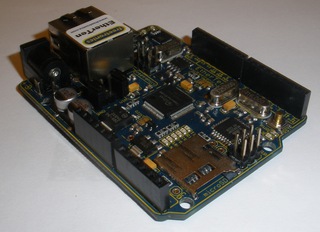In Part 1 of this series of posts, I described the process of reverse engineering the WH2 outdoor weather sensor from Fine Offset Electronics. Here’s what the sensor looks like:
The WH2 wireless outdoor sensor transmits on 433.92MHz - sometimes known as the 433MHz or 434MHz band - using On-Off Keying. In normal operation (after a start up period during which the receiving indoor unit attempts to discover the remote sensor(s)) the WH2 transmits a data packet every 48 seconds, as depicted below:
From now on, I’ll refer to these data bursts as packets.









